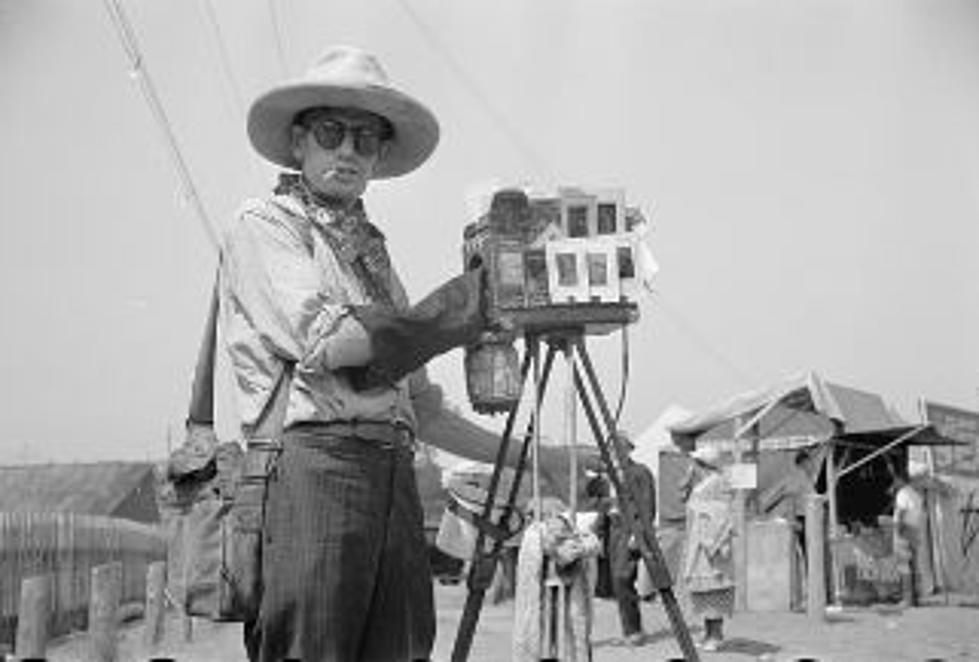
Harmon’s Histories: Family histories preserved in ‘instant’ tintype photos
By Jim Harmon/Missoula Current
My winter project this year has been going through old family photo albums.
One photo, which might be of my mother at age one or two (there was nothing to identify it) is absolutely fascinating. It’s what is called a “tin-type.”
It feels like tin, and has all four corners snipped diagonally.
A bit of research revealed that “tintypes, the popular ‘instant photographs’ of the 19th century, could be produced in a matter of minutes at a price most people could afford. Tintypes democratized photography.”
“Beginning in the mid-1850s, they gave more people than ever before the chance to have a real likeness of themselves - capturing unique glimpses of how everyday Americans looked and lived,” according to the Henry Ford Collection.
Arguably, the most widely-circulated example of the photographic tin-type process is a photo of “Billy the Kid.”
Something called the “wet collodion photography process” was invented back in the 1850s, allowing very fast and very inexpensive portraits in sizes ranging from about 6 by 8 inches to a small 1.5 to 1.75 inch size known as a “Sixteenth Plate.”
The “Sixteenth Plate” size matches the tin-type photo I have. This small size sold for as little as 25 cents, or the equivalent of about six dollars today, which would have nicely fit my relatives’ frugal budgeting (there was certainly no wealth in my family tree).
Here’s a description of the various tin-type sizes available, back then:
Imperial or Mammoth Plate - Larger than 6.5 x 8.5 inches
Whole Plate - 6.5 x 8.5 inches
Half Plate - 4.25 x 5.5 inches
Quarter Plate - 3.25 x 4.25 inches
Sixth Plate - 2.75 x 3.25 inches
Ninth Plate - 2 x 2.5 inches
Sixteenth Plate - 1.5 x 1.75 inches
According to the Library of Congress, “James Ambrose Cutting patented the ambrotype process in 1854. Ambrotypes were most popular in the mid-1850s to mid-1860s.”
Meantime, “tintypes, originally known as or ferrotypes or melainotypes, were invented in the 1850s and continued to be produced into the 20th century.”
You can view many tintypes in the Library of Congress online collection.
One is of a 15-year-old girl and her 14-year-old sister making roses at the Boston Floral Supply Company.
Mary Diamond, 15 years old (on right of photo) making roses at the Boston Floral – Library Of Congress photo
The Boston Floral Supply Company was said to be the only flower factory in Massachusetts. The workers turned out as many as 600 roses a day.
In the above Library of Congress photo, Rose Rabotnick, 14 years old, is on on Mary Diamond’s right, curling petals. Beatrice Sicco, 15 years old is left side of the 1917 photo, curling.
As in previous posts, I hope all of you will take the time to identify your family photos and memorabilia now, before you pass. Otherwise that huge reservoir of knowledge will be lost forever. That would be a most unfortunate.
Jim Harmon is a longtime Missoula news broadcaster, now retired, who writes a weekly history column for Missoula Current. You can contact Jim at fuzzyfossil187@gmail.com. His best-selling book, “The Sneakin’est Man That Ever Was,” a collection of 46 vignettes of Western Montana history, is available at harmonshistories.com.
